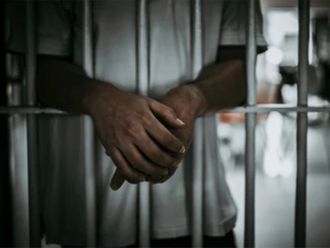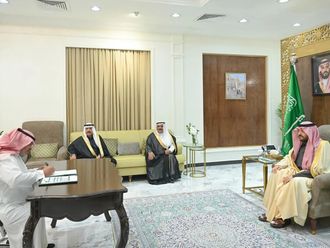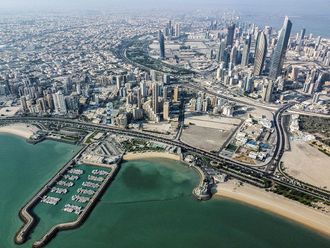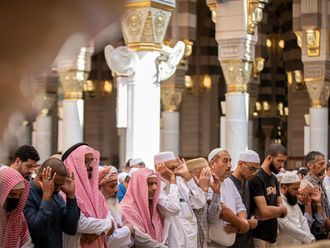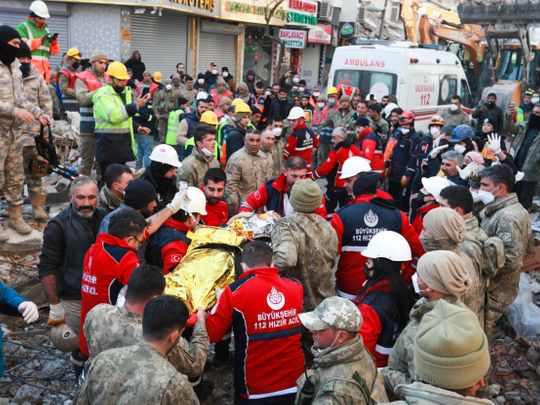
ANKARA: A woman was rescued from the rubble of a building in the southern Turkish city of Hatay on Tuesday aftenoon, some 203 hours (more than 8 days) after a devastating earthquake struck the region, Turkish media reported.
Earlier reports said the rescued person was a man, but later state broadcaster TRT reported a woman was pulled out from under the rubble in the city.
Earlier in the day, an 18-year-old named Mohammad Cafer was rescued from the rubble of a building in southern Turkey, the third rescue of the morning some 198 hours.

Last Monday’s quake and a major aftershock have killed more than 37,000 people in southern Turkey and northwest Syria, according to official tallies expected to rise much higher.
In Turkey’s Adiyman province, broadcasters showed rescue workers carrying Cafer strapped on a stretcher, an oxygen mask on his face and a health worker holding an IV bag, from the site of the collapsed building to a waiting ambulance.
Cafer could be seen moving his fingers as he was carried away.
A short while earlier, rescue workers pulled two brothers alive from the ruins of an apartment block in neighbouring Kahramanmaras province.
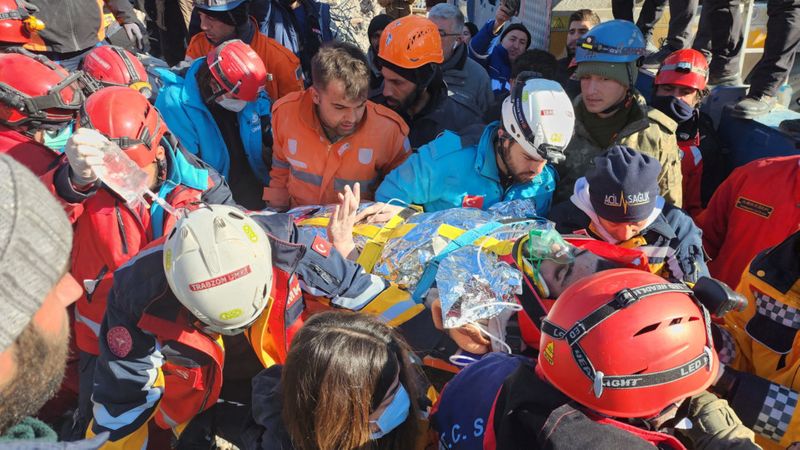
State-owned Anadolu news agency identified them as 17-year-old Muhammed Enes Yeninar and his brother, 21-year-old Baki Yeninar, who was rescued after him.
Dozens of rescuers and Turkish soldiers at the site hugged and clapped after the rescues including that of Enes who was seen wrapped in a thermal blanket and carried on a stretcher to an ambulance in images shown by broadcaster Haberturk.
Rescuers then asked for quiet, and one shouted “Can anyone hear me?” in the frenzied hunt for more survivors.
In hard-hit Hatay, Sengul Abalioglu lost her older sister and four nephews. “It doesn’t matter if they’re dead or alive, we just want our corpses so that they at least have a grave and we can bury them,” she told The Associated Press, devastated as she waited in front of the rubble where her family could be.
‘I can ear her pulse’
Meanwhile, after being trapped beneath rubble for 180 hours, 25-year-old Abir is now fighting for her life in a field hospital.
But survival is a battle.
The Syrian woman lies in a field hospital in the southern city of Antakya, where doctors are trying to save people who were pulled out after being buried for days under debris in the freezing cold.
Those who emerge are often barely clinging to life.
When Abir’s heart briefly stopped after her miraculous rescue, frantic medics took turns pushing hard and fast on her chest.
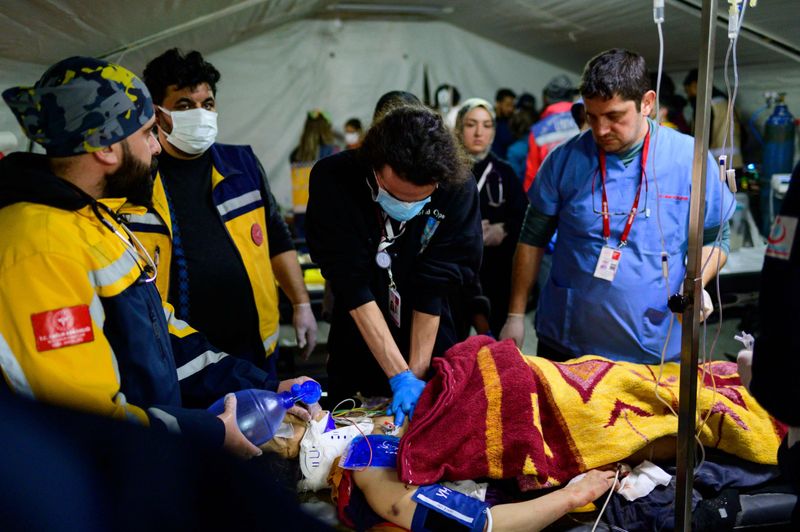
It seemed hopeless until suddenly, one medic shouted: “I can hear her pulse!”
Abir is one of tens of thousands of people injured in the tremor and its aftershocks.
The wails of ambulance sirens had provided the backdrop for the search and rescue work conducted across the ruins of Antakya’s Hatay province since the February 6 quake.
But those wails have fallen silent as the chances of finding people recede.
The focus for emergency doctors like Yilmaz Aydin is on survivors like Abir.
“It’s a miracle to find a patient still alive under the rubble,” Aydin said.
‘Most extraordinary rescue’
In a three-hour period that AFP visited, half a dozen ambulances brought injured victims to the makeshift hospital, which lies near a large Antakya hospital that has been destroyed by the quake.
“From now on, the survivors are likely to be in a more critical condition. The majority of them will need life-saving treatment,” said Aydin.
Doctor Nihat Mujdat Hokenek, who is supervising victims’ treatment, said Abir had abnormal air and gas in the membrane around the lungs that lines the chest cavity.
“Her heart stopped two times but we managed to bring her back. We did everything the medical literature recommends. And after an hour and a half, she pulled through,” he said.
“It was a very special moment, perhaps the most extraordinary rescue of my life” because of the circumstances in which it happened, said Omar, one of the nurses who performed a cardiac massage.
“I’ve saved many lives but I’ve never been this happy,” she said.
Two other women have been evacuated to a more permanent facility.
“Is my father here? Is my mother here?” one of them said through tears before she was put in a helicopter.
‘They could survive’
There can be more miraculous survivals, Hokenek said.
Despite the freezing temperatures, some victims could be stuck in a safe pocket under the rubble, perhaps even with food or water, although Aydin admitted this was rare.
“They could survive for a longer period,” he said.
One foreign rescue worker, who declined to give his name, said that for this, “the person must be really young and in good health, hypothermia being an aggravating factor.”
Several minutes later, Abir is placed on a stretcher and taken to an ambulance.
But as a helicopter waits to take her to a hospital in Adana, 200 kilometres (120 miles) away, her condition deteriorates once again.
Her life will now be in the hands of the Adana doctors. But she is far from the only one facing an uncertain fate.
Two metres away, another grey-haired victim is undergoing the same procedure by nurses. But AFP did not see the older woman emerge from the emergency treatment.
Turkish authorities say around 80,000 people have been injured.
UN appeals for nearly $400 mn for Syria quake victims
The United Nations launched an appeal for $397 million on Tuesday to help earthquake victims in Syria, where the disaster has killed thousands of people and left millions more in desperate need of aid.
Secretary-General Antonio Guterres, announcing the appeal at the UN headquarters in New York, said the funds would bring “life-saving relief” for nearly five million Syrians and would cover a period of three months.
He added that the world body was in the “final stages” of a similar appeal for Turkey.
“One week after the devastating earthquakes, millions of people across the region are struggling for survival, homeless and in freezing temperatures. We are doing all we can to change this. But much more is needed,” Guterres pleaded.
He called on member states to “fully fund this effort without delay and help the millions of children, women and men whose lives have been upended by this generational disaster.”
Guterres also urged that aid workers be allowed to operate freely in Syria, already racked by 12 years of civil war.
Activists and emergency teams in Syria’s northwest have decried the slow UN response to the quake in rebel-held areas, contrasting it with the planeloads of humanitarian aid that have been delivered to government-controlled airports.
Before the earthquake struck, almost all of the crucial humanitarian aid for the more than four million people living in rebel-controlled areas of northwest Syria was being delivered through just one crossing.
Guterres announced on Monday that Syrian President Bashar Al Assad has agreed to open two more border crossings from Turkey to northwest Syria to allow in aid.
“The human suffering from this epic natural disaster should not be made even worse by manmade obstacles - access, funding, supplies,” said the UN chief.
“Aid must get through from all sides, to all sides, through all routes - without any restrictions.”
The United Nations has already provided $50 million through its central emergency response fund.






